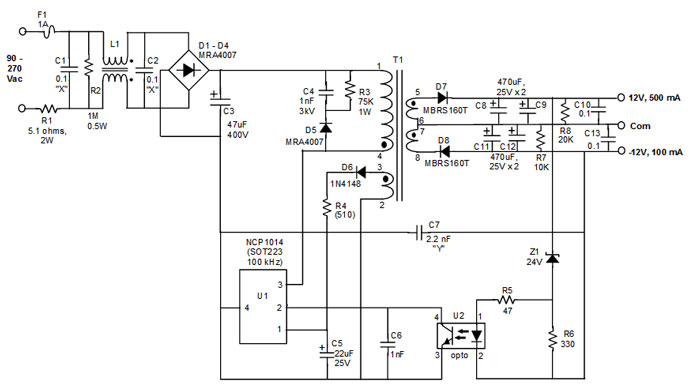What is Universal Input?
Universal input means the power source input range is within AC 85 ~ 264 Volt and capable of operating at 50 and 60 Hz. These power supplies can be used anywhere in the world without adjusting a select switch for the input power.
These power supplies are designed to accommodate a wide range of ac sources while supplying the same output. Typical supplies can accept input voltages of between 85 and 264 volts. This makes it easy for customers to use the equipment directly on the ac mains regardless of whether it is 100, or 200 volts range.
The design of a universal input supply includes circuitry with components that can tolerate a wide range of voltage fluctuations. This enables the supply to handle a wider input voltage range hence the ability to cover the whole spectrum of ac supply voltages in the world. In addition, the supplies can also operate on either 50 or 60 Hz.
Some older models were designed to operate on either the 230 or 110 volts. These had a manual switch or jumper to change from one mode to the other. Connecting the supply when on the wrong setting often damaged the supply, especially if powered on 230 Volts while the setting is on 110 Volts.
The modern day universal input power supply is automatic and does not require the manual switch. Senses the input voltage and adjust it automatically. The universal supply is convenient to the consumers who do not have to convert the available power to suit the product, in addition, it save the manufacturer the pain of having to design and make different equipment for different markets.
The growing global markets have led to an increased demand for universal input power supplies. Some applications such as field communication equipment are designed to operate form a variety of power sources including the universal ac within 85 – 264 volts as well as battery power.

Figure 1: A typical 90 -270 ac input, +12 and – 12 Volts output circuit diagram – Image Credit
Factors considered when designing universal input power supply
Some of the considerations when thinking of designing a universal input supplies are:
- Cost
- Size
- Regional regulatory requirements
- Power factor correction (PFC)
- Electromagnetic interference
Power supplies with a universal input range are more complex and expensive to manufacturer. In addition, they are larger and have lower efficiency compared to the supplies designed to operate on one voltage. It costs more to have the equipment pass all the regulatory requirements for each region where it will be used. The other problem is that some regions have special requirements such as power factor correction while others do not, hence making it expensive to add the PFC to a supply which will be used in a region which does not need the function.
Despite the need for universal power supplies, there are a few issues that come into play when designing them. This calls for a trade off as designers try to make equipment that are compatible with the varying global ac power with varying voltages and frequencies.
The users for mobile devices such as mobile phones, tablets laptops, and others can comfortably move across the globe with no worries or having to carry bulky and expensive converters. However, the larger equipment such as big screen TVs may be designed for specific markets since they are not moved frequently.